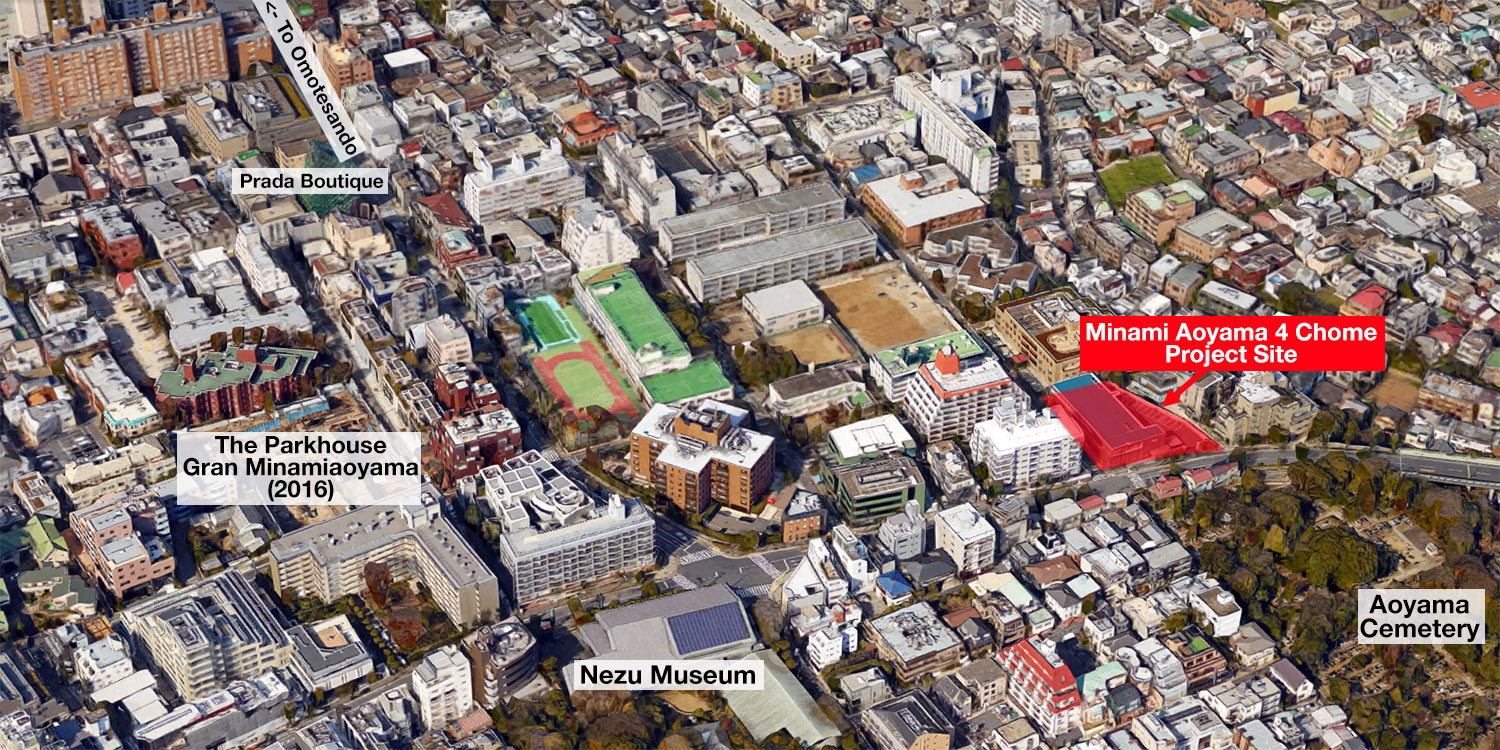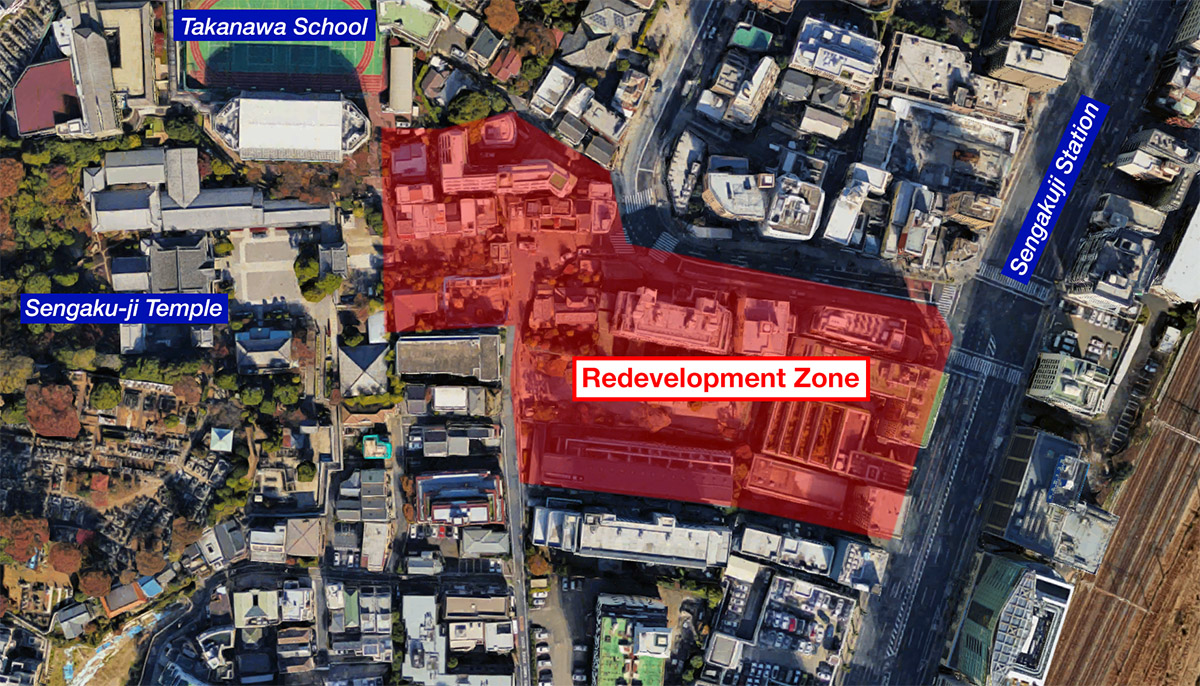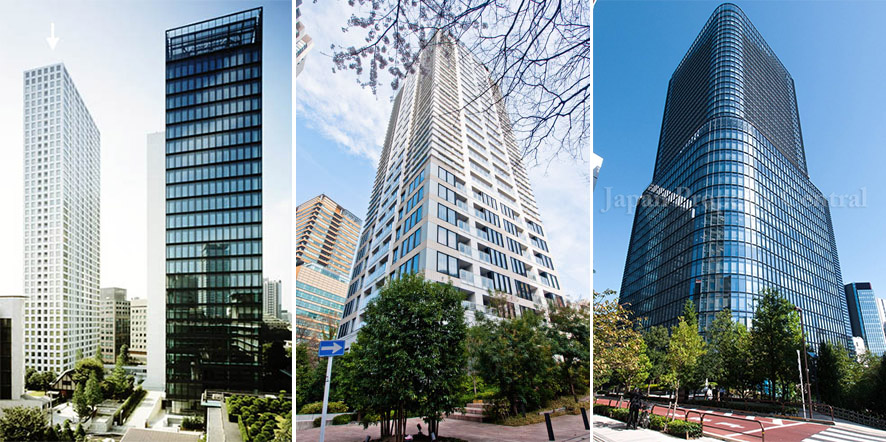New luxury apartment building for Omotesando in 2019

Construction has started on a new luxury apartment building in Omotesando. The Minato-ku Minami Aoyama 4 Chome Project is a 7-story residential building located across the street from the Aoyama Cemetery and next-door to Oji Green Hill Apartments.
The developer, Mitsubishi Jisho Residence, recently completed a 7-story condominium called The Parkhouse Gran Minami Aoyama just 300 meters from this current project site. The apartments went on sale in mid-2015 and sold out on the first day of sales with an average of 9.6 buyers for each apartment. Current resale prices in this building range from 2.4 ~ 3.95 million Yen per square meter (approx. 1,980 ~ 3,260 USD/sq ft). It is possible that this new project could see similar pricing.Read more
Potential redevelopment for area near Sengaku-ji Temple

An area just east of Sengaku-ji Temple in Takanawa, Tokyo, has entered the very early stages of discussions for a possible future redevelopment. The area covers 11,000 square meters and currently includes a number of low-rise houses, office and apartment buildings. It also includes Sengaku-ji’s Middle Gate and temple road.
Sumitomo Realty is taking part in planning and preparation. A town planning decision is eyed for 2018 and construction could start by 2020.Read more
Tokyo Apartment Sales in January 2017

The following is a selection of apartments that were sold in central Tokyo during the month of January 2017:Read more
Toranomon Area Property Guide - 2017

Toranomon is possibly the most exciting area in Tokyo at the moment for real estate development and activity. A lot of offshore buyers are still unfamiliar with the Toranomon area, despite it being right next door to Roppongi, but we are expecting this to change in the next 5 or so years as major projects are completed.
Over the past 10 years the resident population has increased by 48%. The average household size in 2017 is 1.8 persons, up from 1.68 in 2007. New residential developments will see the population rise further in the coming years as more people can move to the neighborhood.Read more
Outlook for Greater Tokyo’s new apartment market in 2017
The Real Estate Economic Institute released a report on potential trends for the new apartment market in greater Tokyo for this coming year.
Supply
The supply of brand new apartments is expected to reach 38,000 units in greater Tokyo, up 6.4% from 2016 and the first time in four years to see an increase in supply. It is still below the level of 56,478 units released for sale in 2013. In 2016, supply was down 11.7% from 2015.Read more
Chuo-ku’s population reaches 55-year high
The population of Tokyo’s Chuo ward exceeded 150,000 residents for the first time since 1962. Construction of high-rises in the bayside area and a desire to live closer to one’s workplace has seen population on a rise since 1998. Meanwhile, childcare facilities and medical clinics are struggling with the larger population.Read more
New apartment prices in Kyoto reach record high in 2016
 The average price of a new apartment in Kyoto City increased for the sixth year in a row, reaching 52,960,000 Yen in 2016. The city is the second most expensive region in Japan for new apartments, with Tokyo’s 23 wards in top place with an average price of 66,290,000 Yen in 2016.
The average price of a new apartment in Kyoto City increased for the sixth year in a row, reaching 52,960,000 Yen in 2016. The city is the second most expensive region in Japan for new apartments, with Tokyo’s 23 wards in top place with an average price of 66,290,000 Yen in 2016.
Prices have been pushed up by several factors, including increasing construction costs, fierce competition between developers looking for sites for hotels, and growing demand from out-of-town buyers.Read more
